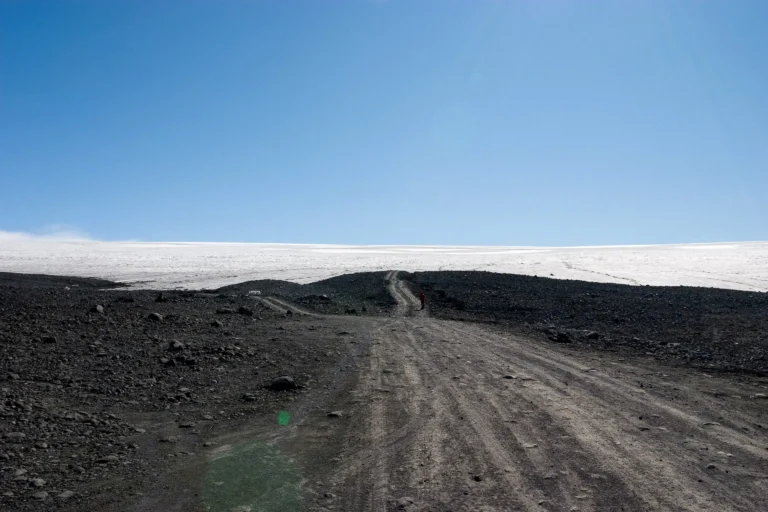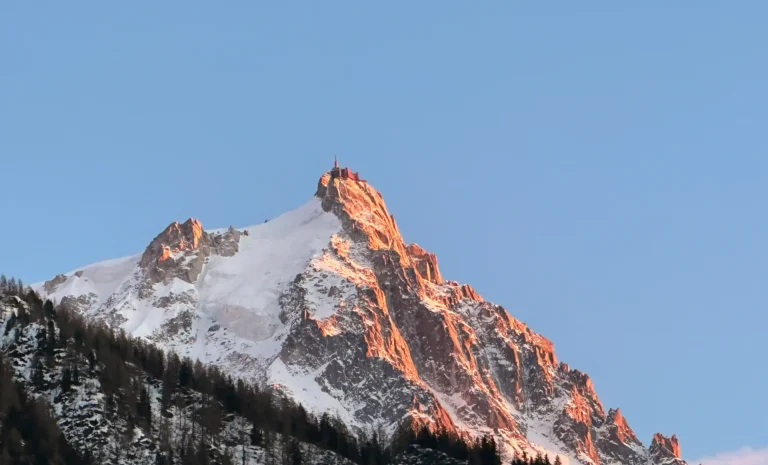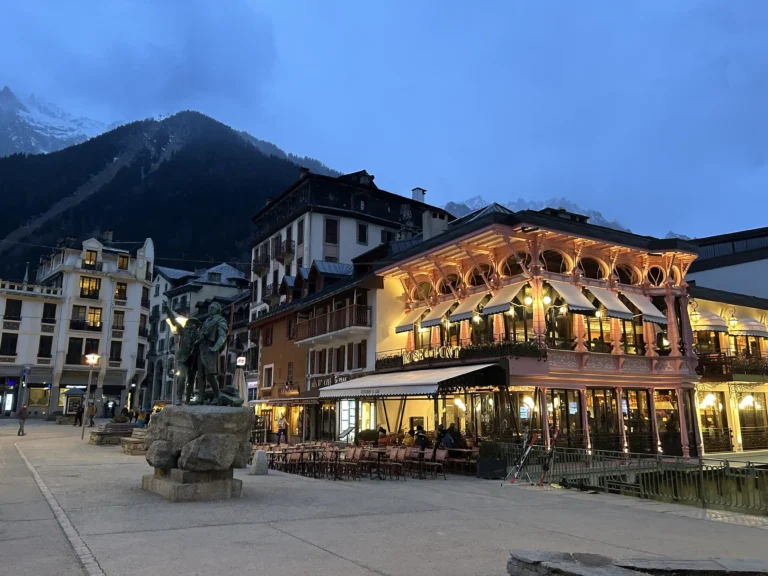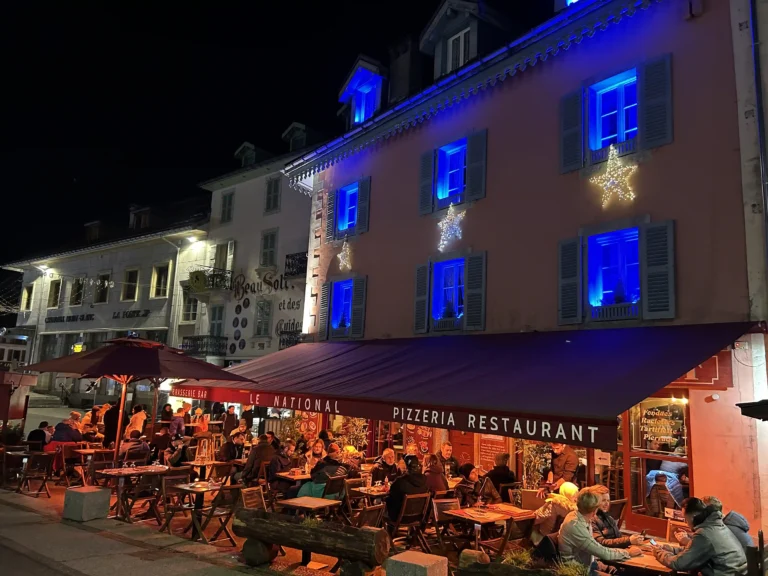We woke up to see clear skies again. Amazing! After checkout, we headed towards Langjökull. Jökull, in the Icelandic language, means glacier. The first 25 km were familiar, but then we turned to the F-road. The roads marked with F are usually mountain roads and are only suitable for 4×4 driving as they have a loose gravel surface. The traffic is not heavy in Iceland, but at F550, it was scarce. During 42 km, we met only five cars. The views were amazing. Sometimes it felt like being on the moon.
Langjökull was huge. We turned from the F550 to the base station. It seems that from this place, tours are organized to walk or drive on glaciers. We went to Langjökull and enjoyed the view—this is when you feel how powerful nature is! Although it was cold (+5 Celsius) and had an extra strong cold wind, I enjoyed being there.
Is Langjökull worth visiting?
Many people find Langjökull to be a unique and exciting destination, and it can be a great addition to a trip to Iceland. The glacier offers a variety of activities, such as ice caving, snowmobiling, and hiking, which can provide visitors with an exciting and unique experience. However, it’s worth noting that these activities can be pretty expensive, and weather conditions on the glacier can be unpredictable, so you should be prepared for cold and potentially challenging conditions. If you’re interested in visiting Langjökull, it’s best to research and plan your trip in advance.
Before doing any activity, make sure to check the weather conditions, dress appropriately, and make sure to book with a reputable company.
It’s also worth noting that Langjökull is also used for scientific research on glacial mass balance and as a source of drinking water for nearby communities, so it is essential to be respectful of the environment and to follow the guidelines provided by tour operators.
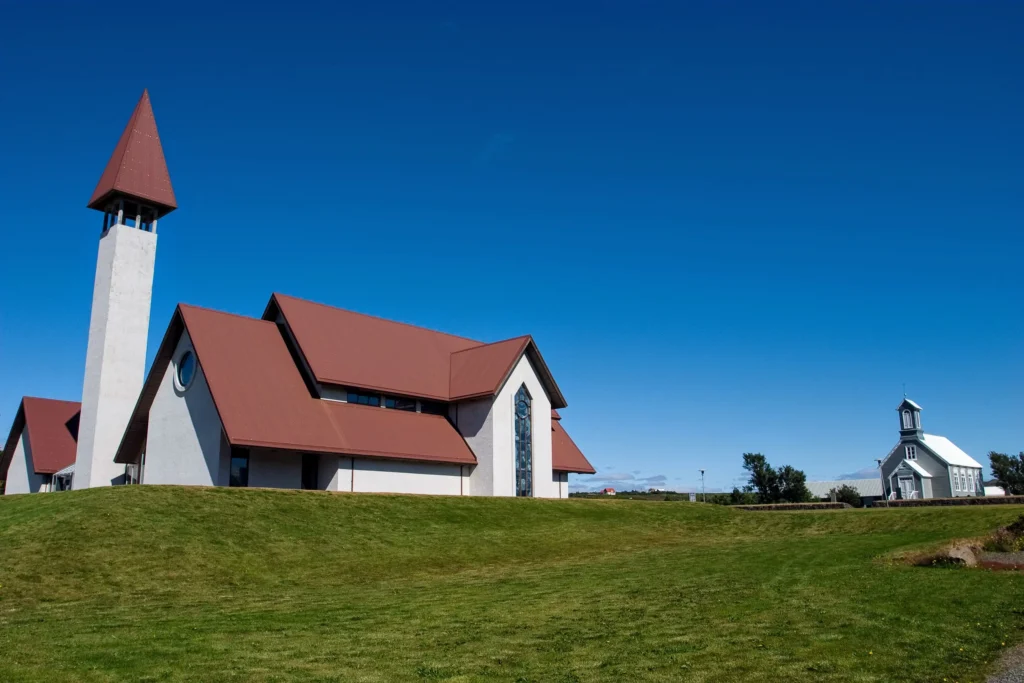
After the stop at Langjökull, we head towards Snæfellsnes. As suggested in the guidebooks, we made a stop at Hraunfossar. That is one fantastic fall. The first impression is that water comes just out of the wall. Beautiful. It was similar to Seven Sisters’ Fall in Geiranger Fjord, Norway. However, this was lower, with more falls.
Another fall, Barnafoss, was just next to Hraunfossar. The story of that fall was sad and oppressive. The name means “Children’s fall.” There used to be a rock arch over the river Hvita, but two children were swept off it to their deaths during Christmas, so the beautiful waterfall got its name.
Just about 20 km from Hraunfossar, we made a stop in Reykholt. Reykholt is one of the most notable historical sites. It is a cultural center, a church, and a vicarage. We turned into the village as we saw beautiful churches-one very modern and new (Iceland’s newest, built-in 1996), and another just next to it, wooden, small, and old. The area is most famous for being home to Snorri Sturluson (1178-1241). Snorri is Iceland’s best-known author, poet, and scholar. He has written many Viking sagas. We also saw an ancient thermal pool named after him—Snorralaug.
What to do in Reykholt?
- Visiting the Snorrastofa Cultural and Historical Center: This center is dedicated to studying Snorri Sturluson, the famous medieval Icelandic chieftain and poet who lived in Reykholt. Visitors can learn about Snorri’s life and works and see artifacts and other historical items related to him.
- Taking a dip in the Reykholt Baths: These hot springs are said to have healing properties, and many visitors enjoy taking a dip in the warm waters.
- Exploring the surrounding area: Reykholt is located in western Iceland, an area known for its natural beauty. Visitors can go hiking or horseback riding in the nearby mountains or take a drive to see the nearby waterfalls and other natural wonders.
- Visit the Snorri’s farm: You can visit the reconstructed farm where Snorri Sturluson lived and learn about the daily life of medieval Icelanders.
- Visit the church: The church of Reykholt is also an exciting spot to visit, which is located just next to the Snorrastofa cultural center.
- Visit the greenhouse village of Varmahlid. It’s just a few minutes drive from Reykholt. This village is famous for its geothermally heated greenhouses, where you can find a variety of vegetables and fruits grown in the middle of the Icelandic winter.
We had a late picnic lunch at Deildartunguhver (Icelandic names are complicated), Europe’s most giant hot spring. At Deildartunguhver, 180 liters of boiling water bubble from the ground every second. This hot spring provides the whole region with hot boiling water, and a 64-kilometer-long pipeline goes to the nearest towns, Borgarnes and Arkanes. An excess heats the greenhouses. We also bought some tomatoes from the box at the hot spring and left 100 kroner as requested.
After Reykholt, it seemed that the day had already been very long and full of perfect moments. The drive from Reykholt to Grundarfjordur was scenic, deep blue sea, beautiful Nordic mountains, fjords, sheep, and wild horses.
We checked into our pre-booked hotel, Framnes, in Grundarfjordur. Honestly, the hotel was not our first choice. But as the most highly rated and suggested hotel in Hellnar was fully booked, we booked this. Looking backward—we were just lucky. I believe this is an excellent location to explore Snaefellsnes, and the hotel itself was solid. 2007 is the first full year in charge of the current management. The hotel was good-nice spacious rooms, friendly staff, and excellent food. The manager welcomed us personally and suggested how to get the most out of Snaefellsnes.
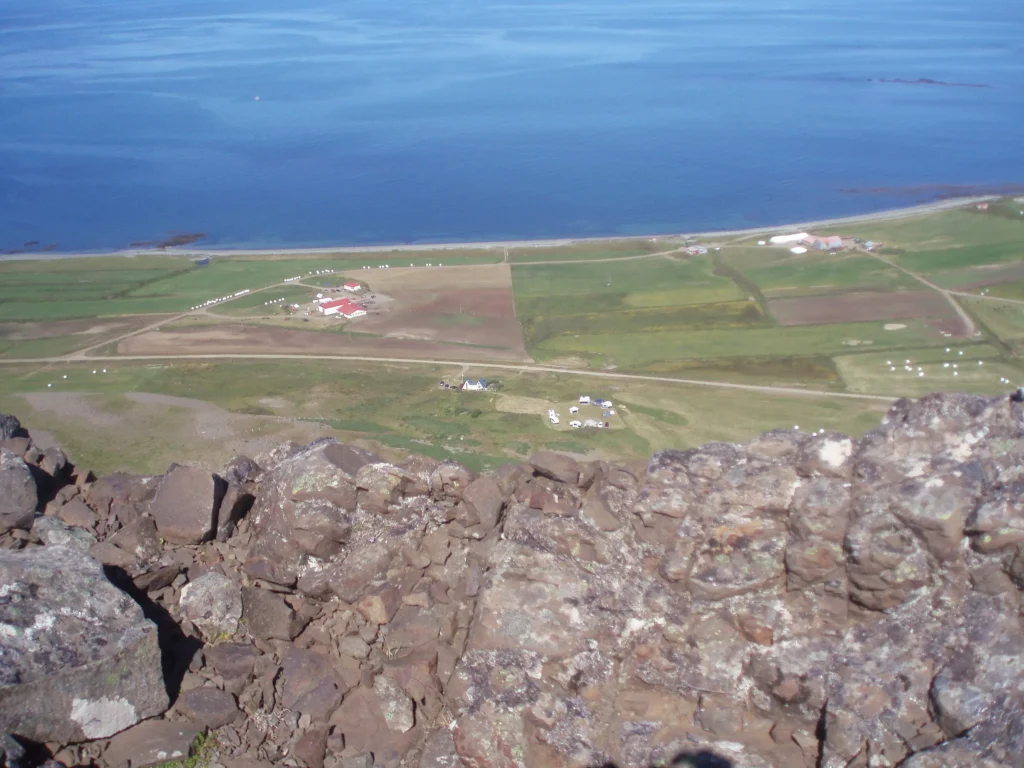
On the first evening, he suggested we climb either Kirkjufell or Eyrarfjell mountains. He promised that there would be marked trails. Kirkjufell is considered to be the most beautiful mountain in Iceland. I can agree that this 463-meter-high mountain looks unusual, so separate from other mountains and the blue-blue sea in the background, beautiful and classic. But what we did not find were the marked trails. Later, the marked trail appeared to mean something different in Iceland than in Switzerland.
We drove to another suggestion—Eyrarfjall. This mountain is 352 meters high. The hotel manager said there would be marked trails up, and climbing takes about 1,5 hours. After that, you can run down in 4 minutes. Again, we did not find any marked trails. But we noticed some people at one of the farms and asked for advice. The host showed us directions and said he and his wife would follow us shortly.
The climb up was challenging but enjoyable. We eventually got the company, which made things much easier because we knew we were on the right track. As the weather was clear, we had excellent views of the Snæfellsnes peninsula, and even Snæfellsjökull was well spotted. We signed in the guestbook at the top of Eyrarfjall (you will find it in the mailbox), and then it was time to run down. At first, I was frightened. But when I saw how easily the others did it, I ran too. It was great fun, and the whole experience was one of the highlights of our Iceland trip.
We had dinner at our hotel. There was a day’s special menu which included grilled codfish. This was delicious. We can suggest that the kitchen in Framnes can meet the highest demands. By the end of the day, we realized that even though we had only been in Iceland for 2.5 days, the memories we had accumulated equated to a much more extended vacation.
Related reading:
